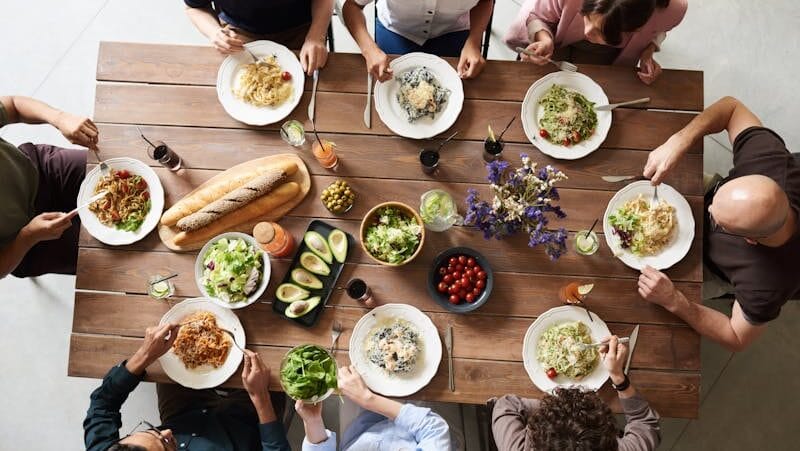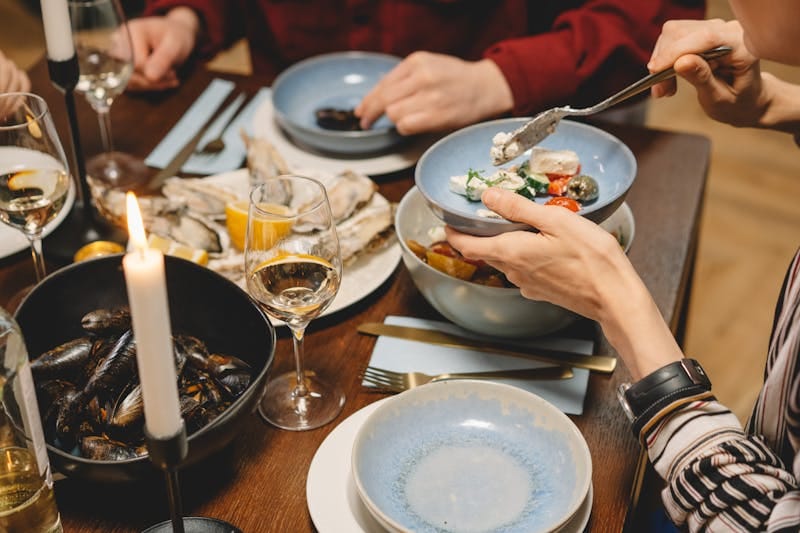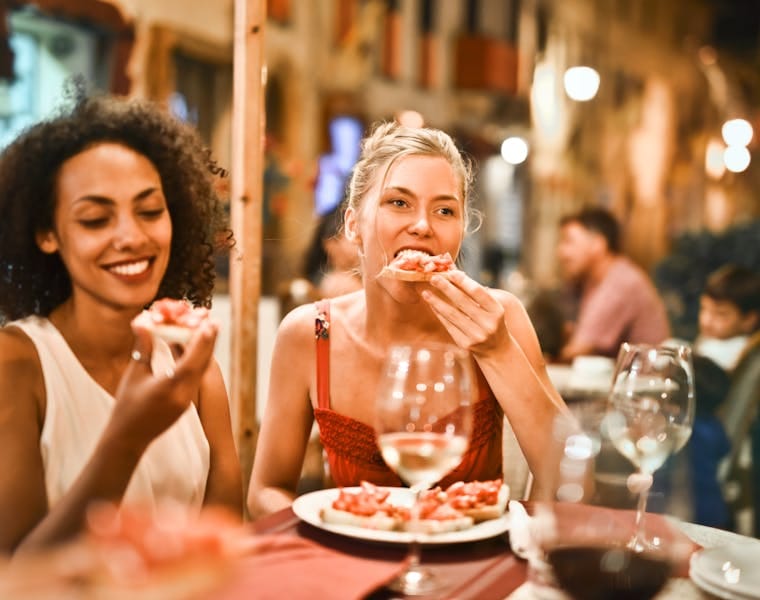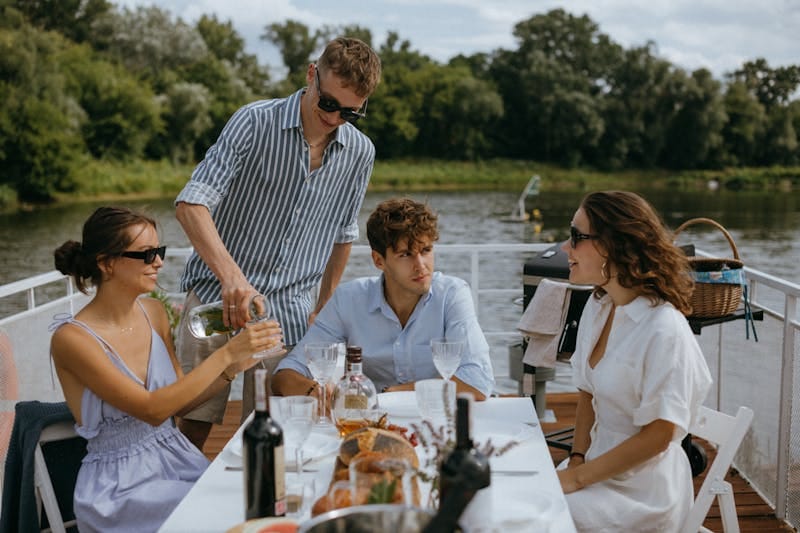Eating in Portugal: 10 Food and Wine Pairings You Must Try! (Part 3)
Portugal is a popular tourist destination renowned for its sandy beaches, historic cities, and mild climate. However, one of the highlights for most visitors is the delicious food and wine. There are many traditional dishes reflecting the local history. More recently, modern cuisine is bringing a twist to centuries-old recipes.
As you have seen in the first part of this three-part article series, the Portuguese love their iconic dishes. Popular ingredients include olive oil, cured sausages, fresh seafood, and bacalhau, which is dried and salted cod.
National dishes blend common Mediterranean ingredients with Asian spices and unique cooking techniques. In the past decade, Portuguese foods, like the pastel de nata
Similarly, many Portuguese wines gained international recognition throughout the years. The second article in this series explored the Portuguese wine regions. The country is divided into fourteen sections, with different grapes grown and distinct techniques used in each one.
Part 3 of this three-part article series will focus on food and wine pairings. You will explore incredible combinations not to miss when visiting Portugal. Besides, get our top tips on choosing restaurants and stepping out of what most tourists do.
Pairing Portuguese Wine and Foods
The best way to enjoy the local food and drinks is by pairing them together. There is nothing like a delicious meal with a drink that perfectly complements its flavors and textures. However, it might be challenging to pair flavors you are tasting for the first time with wines you might not have tried before.
Do you want to learn about local foods and drinks directly from the locals? Come and learn Portuguese! The Journey is your ticket to fluency. This online adventure helps you immerse yourself in European Portuguese and leverage science to achieve fluency. Click HERE to learn more!
As a rule of thumb, many Portuguese natives combine seafood with white and meat with red wine. Still, the success of your choice will come down to the dish and beverage you choose. Thus, you should start by knowing a bit about the flavors of a dish and the wine profile of each region. This will allow you to create tasty pairings while giving you some room to experiment.
10 Meat-Based Food and Wine Pairings
Starting with savory dishes, explore some of the food and wine pairings you can taste when visiting Portugal. Explore delicious seafood and meat pairings you can find in local restaurants or recreate at home. Learn what makes these dishes and beverages perfect for each other.
Bacalhau à Brás and Bucelas White
Bacalhau à Brás
Leitão da Bairrada (Roast Suckling Pig) and Bairrada Baga Red
Roast suckling pig is a traditional meal from the Bairrada
Arroz de Marisco (Seafood Rice) and Setúbal White
Arroz de marisco
Caldeirada (Fish Stew) and Vinho Verde
Another delicious seafood dish, Caldeirada
Tripas à Moda do Porto (Porto-style tripe stew) and Douro Red
Tripas
Feijoada à Transmontana (Bean and Meat Stew) and Trás-os-Montes Red
Feijoada
Carne de Porco à Alentejana (Pork and clams) and Alentejo Red
Alentejo
Polvo à Lagareiro (Roasted Octopus with Olive Oil) and Dão White
Lagareiro
Cabrito Assado (Roast Goat) and Beira Interior Red
Another Portuguese favorite is Cabrito Assado, a roast kid with herbs, usually served with cooked greens and potatoes. You can pair it with a medium-bodied glass of red from the Beira Interior
Alheira de Mirandela (Smoked Bread Sausage) and Trás-os-Montes White
Our final pairing suggestion is a traditional smoked bread sausage with Jewish roots. It is made with poultry meat, bread, and spices. It pairs well with a mineral white, like the one from Trás-os-Montes, produced from Gouveio
5 Vegetarian and Vegan Options
Most traditional recipes and regional variations are meat or fish-based. However, many Portuguese dishes are either vegetarian or can easily be adapted to become so. Besides, some can even be turned vegan to accommodate your preferences.
Thus, most restaurants offer vegetarian and vegan options, like vegetable stews and salads. Additionally, the growing awareness of different lifestyle choices led many businesses to prioritize plant-based meals. You will find them, especially in larger cities and popular tourist areas.
Whether in local stores or national supermarket chains, it is easy to find vegan and vegetarian ingredients. Additionally, farmers’ markets have a wide variety of fresh produce and specialty products. Look into five dishes you can enjoy with a glass of local wine.
Açorda Alentejana (Garlic and Cilantro Bread Soup) and Alentejo White
Açorda
Migas de Espargos (Asparagus Bread Mash) and Dão White
Migas de Espargos
Caldo Verde (Green Soup) and Vinho Verde
Although not originally a vegetarian recipe, Caldo Verde
Peixinhos da Horta (Green Bean Fritters)
Peixinhos da horta
Empadão de Legumes (Vegetable Shepherd’s Pie) and Bairrada Red
Empadão
5 Desserts and Pastries Pairings
Portuguese cuisine offers a variety of sweet treats to suit everyone’s taste. One of the bases for traditional Portuguese pastry is what is called Doçaria Conventual
Local pastry also has many foreign influences. For example, Bolas de Berlim
Pastel de Nata and Carcavelos Fortified Wine
The creamy, flaky Pastel de Nata
Toucinho do Céu (Almond and Egg Yolk Cake) and Moscatel de Setúbal
Toucinho do Céu
Pão de Ló (Sponge Cake) and Dão Sparkling Wine
Pão de Ló
Marmelo assado (Roasted Quince) and Port Wine
Quince jam and port is a popular combination among Portuguese natives. A lighter version blends the tart-sweet, caramelized flavors of roasted quince with the depth and richness of Port Wine. The wine’s velvety texture and dark fruit notes complement the fruit’s sweetness and spice.
Arroz doce (Rice Pudding) and Madeira Wine
Arroz doce
Culinary Experiences and Seasonal Flavors
With such a food-focused culture, Portugal offers an array of culinary and wine-related activities. You can enjoy these experiences whether you have moved to the country or are just visiting. Especially in larger cities, you can find cooking workshops and classes organized by natives or local institutions.
There are insightful excursions to help you learn about regional and national traditions. In these guided tours, you will visit local markets and get a better understanding of local cuisine. This way, you will come to know the culture, enjoy its focus on locally sourced products, and, of course, taste delicious dishes.
Moreover, you can visit cellars and vineyards across the country to learn about wine. Many tourists visit the Douro
Keep in mind that many of these experiences are seasonal. Additionally, in some cases, you may need to check for availability and book in advance. However, including them in your plans will allow you to see a different side of the country. Depending on the season you take your trip in, you will appreciate the regional and seasonal diversity that defines food and wine production in Portugal.

Restaurant Guide
As a tourist destination, the food and beverage industry in Portugal is a vital component of the economy. According to the National Institute for Statistics (INE), it generated over 300,000 jobs and surpassed € 25 billion in 2021.
Whether near the shore or inland, in mainland Portugal or the islands, you can find traditional and modern restaurants. These businesses showcase the variety of local produce and highlight fresh and delicious ingredients. But with such an abundance of options, it can be challenging to choose which to visit.
You can use restaurant and bar guides to pick the most interesting spots for you. For example, the Michelin Guide has plenty of high-end restaurants, bars, and hotels. Besides other options, it also includes the eight restaurants in Portugal that boast two Michelin stars.
Another popular guide among the natives is the Boa Cama Boa Mesa
Local Dining Experiences
Dining experiences in Portugal range from the most relaxed snack bars to fine dining restaurants. Local food spots include tascas
There are also takeaways called Pronto a Comer, serving specialties like Frango Assado
Dining Etiquette
Much like food and wine, dining etiquette changes from nation to nation and even in different regions. In general, natives maintain a relaxed atmosphere during meal times. Still, there are some details to keep in mind.
For example, even if you get served first, you might want to wait until everyone has their food to start eating together. With the importance given to food and family, the natives prefer not to eat on the go. Additionally, it is considered rude to leave the table before everyone finishes eating.
Besides, you should always be polite, using expressions like Por favor
Do you want to learn more about Portuguese culture? Is your goal to naturally blend in with the natives? Come and learn European Portuguese with the Journey! Click the button below to discover the secret to immersing yourself in the local language and traditions.
Learn European Portuguese the Instinctive Way!
For the last decade, we’ve been working on putting together the best possible European Portuguese course. After much research, feedback from our students, and several iterations, we think we’ve got it! 😉
At the base of it all is a sound conviction that languages are better learned instinctively, so the process needs to be engaging, varied, and enjoyable. Throughout, we used scientifically proven techniques to help you master pronunciation, phrase construction, oral understanding, grammar, and all the necessary bits to get you to fluency. And still, the whole thing is presented as an adventure. It’s a course like no other. Click the button below to see for yourself!
Food Safety and Hygiene
Like most European countries, Portugal has a public authority to ensure food safety and hygiene. It is the ASAE
With the recent pandemic, the national tourism authority, Turismo de Portugal
Still, you must take some precautions. For example, remember to always wash your hands before eating. Check if proteins, like chicken, pork, fish, and seafood, are well-cooked or fresh if eaten raw. Additionally, inform your server of any food intolerances, allergies, and other dietary needs. This way, you can feel safe and avoid misunderstandings while eating and drinking out in Portugal.
Budget and Cost
For a long time, Portugal was known as an affordable destination. With the increase in tourism and the rise of food and energy prices, costs have grown exponentially in the last few years. Still, some regions of the country are relatively inexpensive compared to other major destinations.
Especially inland and on the islands, you can eat generous portions of traditional dishes for less than twenty euros. In large cities like Lisbon, Porto, and Coimbra, you can still find local cafés
Culinary and wine-tasting experiences, like the Douro
A Wrap-Up on Eating in Portugal: 10 Food and Wine Pairings You Must Try!
Portugal is a popular tourist destination known for its stunning landscapes and warm weather. But one of the things that most captures its visitors is the delicious food and drink. Its 800 kilometers of shore provide an abundance of fresh fish and seafood. Moreover, the country produces high-quality meat, olive oil, and a variety of fresh fruits and vegetables.
Portugal also produces award-winning wines that pair perfectly with its traditional dishes. From the renowned port to the delicious table wines created everywhere in the country, each region has its specialties.
In fact, one of the best ways to explore Portuguese culture is by tasting local foods and wines and combining them. These delicious combinations will make your trip to Portugal memorable. Besides eating at regional restaurants, you can visit wineries, cellars, and wine bars. This way, you will learn more about the food and beverage culture in Portugal.
What is your favorite Portuguese food and wine pairing? Have you tasted any of the combinations suggested on this list? Let us know in the comments below!
After reading about these incredible food and wine pairings, be sure to stay tuned to our YouTube channel. We are working on a vlog series that takes you to the heart of each region. You will see how locals enjoy these pairings, learn a bit of Portuguese, and get a real taste of the culture. It is the perfect companion to your journey and what you are discovering here!











